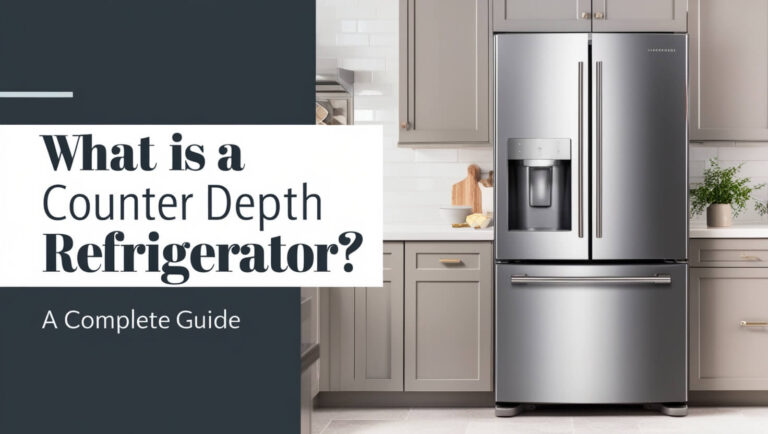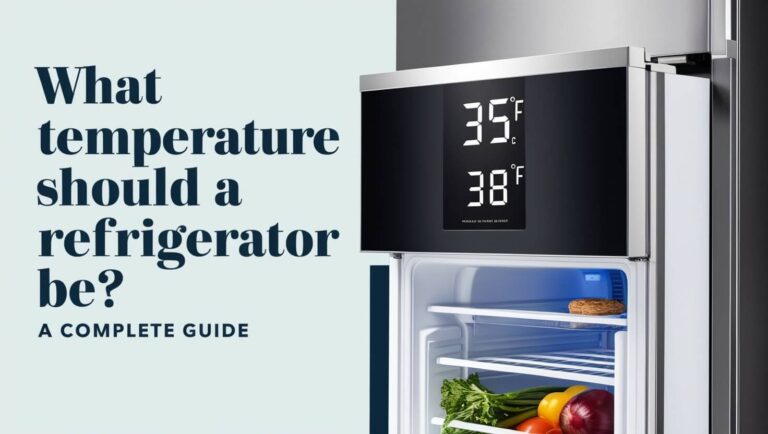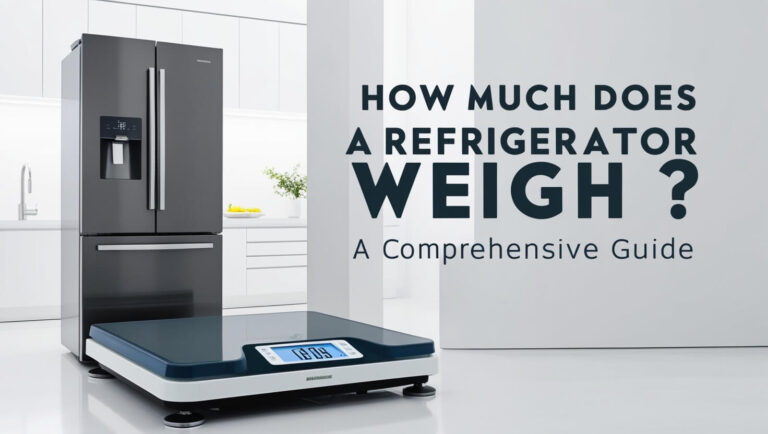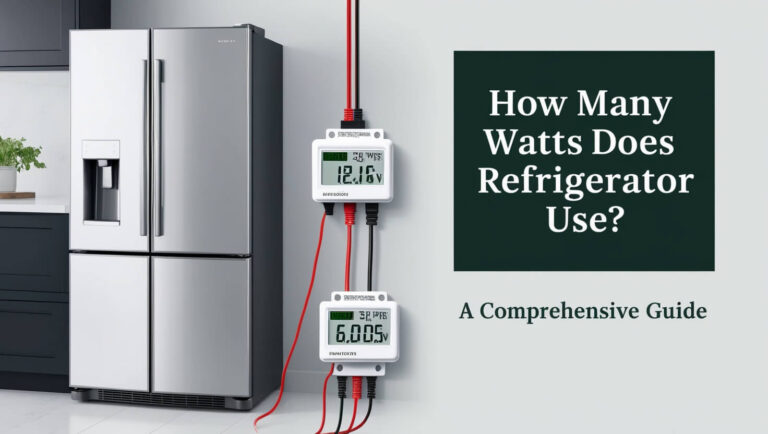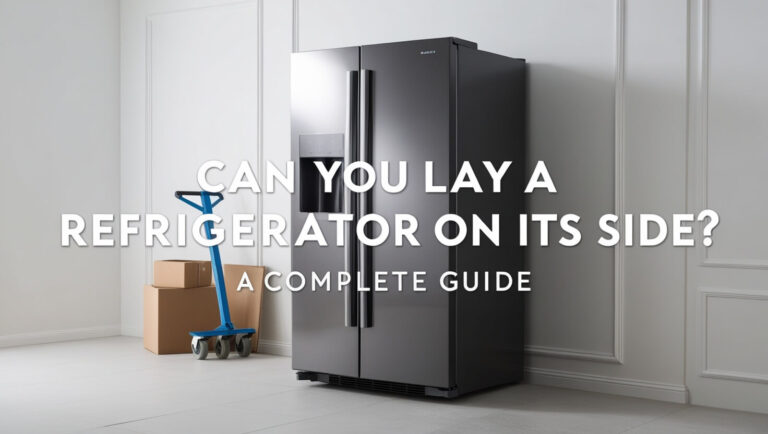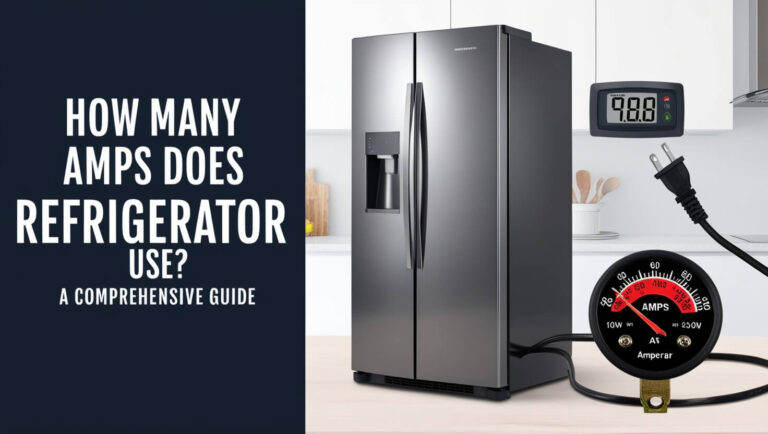How Does a Refrigerator Work? Science Behind Keeping Your Food Cool
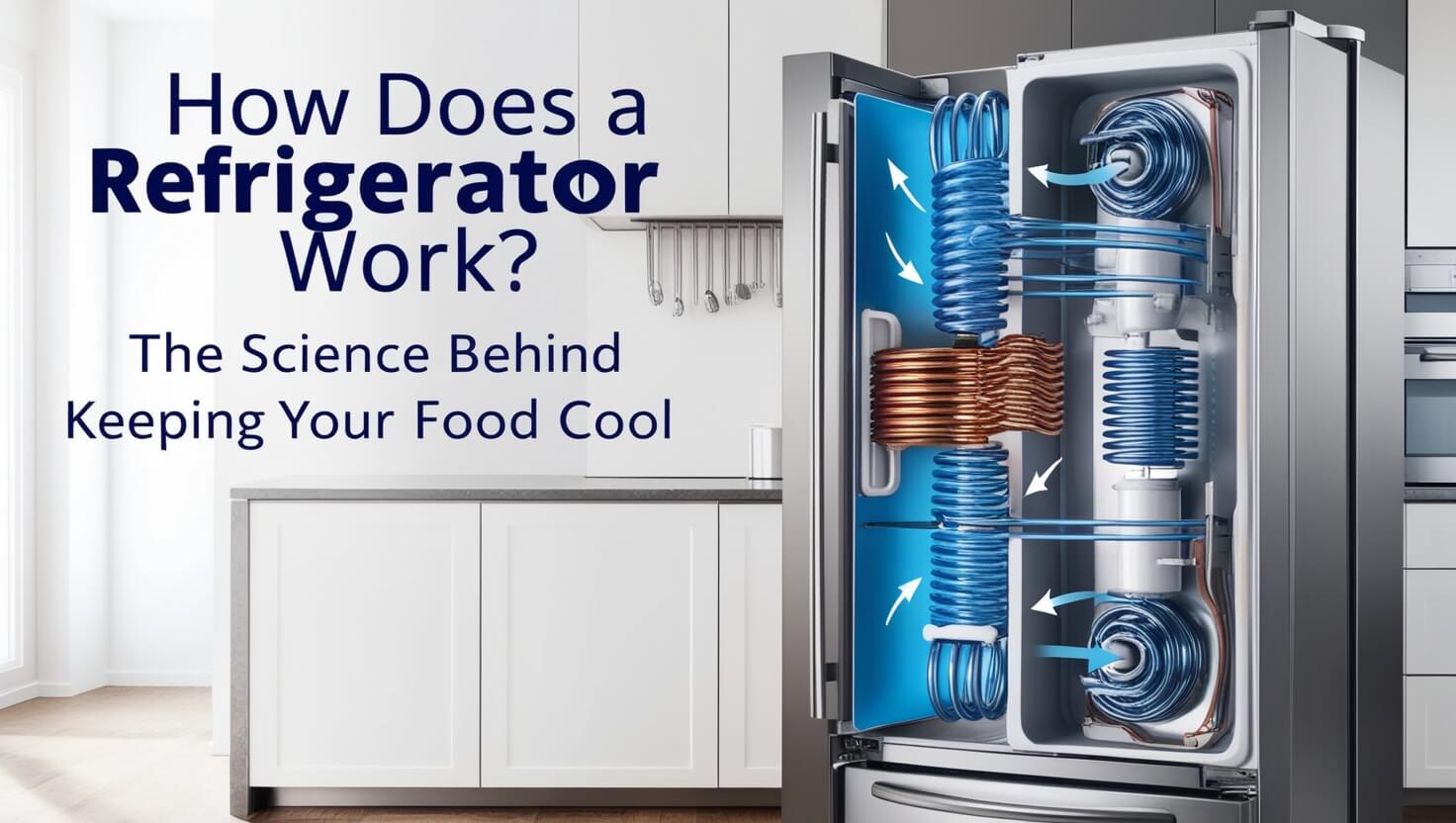
Refrigerators are essential appliances in our homes, working tirelessly to keep our food fresh and safe. But have you ever wondered how a refrigerator works? These marvels of modern technology use a complex system of components and scientific principles to maintain cool temperatures. In this article, we’ll dive deep into the inner workings of refrigerators, exploring their components, cooling processes, and much more.
The Basics of Refrigeration
What is a refrigerator?
A refrigerator is an appliance designed to maintain a cool environment for storing food and beverages. It uses a closed system of components to remove heat from its interior, keeping the contents at a temperature below the surrounding room temperature.
The purpose of refrigeration
The main goal of refrigeration is to slow down the growth of bacteria and other microorganisms that cause food spoilage. By keeping food at low temperatures, typically around 40°F (4°C), refrigerators help extend the shelf life of perishable items and reduce the risk of foodborne illnesses.
A brief history of refrigerators
The concept of refrigeration dates back centuries, but modern electric refrigerators as we know them today were first introduced in the early 20th century. The first home electric refrigerator was invented in 1913 by Fred W. Wolf. Since then, refrigerators have undergone significant improvements in efficiency, design, and features.
The Key Components of a Refrigerator
To understand how a refrigerator works, it’s essential to familiarize yourself with its main components. Each part plays a crucial role in the cooling process.
Compressor: The heart of the cooling system
The compressor is often called the heart of the refrigerator because it drives the entire cooling process. Its main function is to compress the refrigerant gas, increasing its temperature and pressure. This pressurized gas then flows through the system, enabling the heat transfer process.
Condenser coils: Where heat dissipates
The condenser coils are typically located at the back or underneath the refrigerator. These coils allow the hot, pressurized refrigerant to release heat into the surrounding air. As the refrigerant cools, it condenses back into a liquid state.
Expansion device: Controlling refrigerant flow
The expansion device, which can be a capillary tube or an expansion valve, is responsible for reducing the pressure of the liquid refrigerant. This sudden drop in pressure causes the refrigerant to expand and partially vaporize, significantly lowering its temperature.
Evaporator coils: Absorbing heat from inside
The evaporator coils are located inside the refrigerator compartment. As the cold refrigerant flows through these coils, it absorbs heat from the air inside the fridge, cooling the interior space.
Thermostat: Regulating temperature
The thermostat acts as the refrigerator’s temperature control system. It monitors the internal temperature and signals the compressor to start or stop the cooling cycle as needed to maintain the desired temperature.
The Refrigeration Cycle Explained
Now that we’ve covered the main components, let’s walk through the step-by-step process of how a refrigerator works to keep your food cool.
Step 1: Compression of refrigerant
The cycle begins with the compressor. It draws in low-pressure refrigerant gas and compresses it, raising both its temperature and pressure. This process is similar to how a bicycle pump heats up when you’re inflating a tire.
Step 2: Heat release in the condenser
The hot, high-pressure refrigerant gas then flows into the condenser coils. As it moves through these coils, it releases heat to the surrounding air. This heat dissipation causes the refrigerant to cool down and condense into a warm liquid, still under high pressure.
Step 3: Expansion and cooling
The warm liquid refrigerant then passes through the expansion device. This component dramatically reduces the pressure of the refrigerant, causing it to expand rapidly. As it expands, some of the liquid turns into a gas, and the temperature of the mixture drops significantly.
Step 4: Heat absorption in the evaporator
The cold refrigerant mixture then enters the evaporator coils inside the refrigerator. As it flows through these coils, it absorbs heat from the air inside the fridge. This heat absorption causes the remaining liquid refrigerant to evaporate completely, turning into a low-pressure gas.
Step 5: Return to the compressor
The now-warmed, low-pressure refrigerant gas returns to the compressor, where the cycle begins anew. This continuous process of heat transfer is what keeps the inside of your refrigerator cool.
Types of Refrigerants Used in Modern Refrigerators
Refrigerants are crucial to the operation of refrigerators. These substances are chosen for their ability to efficiently absorb and release heat as they change between liquid and gas states.
Evolution of refrigerants
Early refrigerators used toxic gases like ammonia and methyl chloride as refrigerants. In the 1930s, chlorofluorocarbons (CFCs) were introduced as a safer alternative. However, CFCs were later found to be harmful to the ozone layer, leading to their phase-out.
Current refrigerant options
Today, most refrigerators use hydrofluorocarbons (HFCs) or hydrofluoroolefins (HFOs) as refrigerants. These substances are more environmentally friendly than their predecessors but still have some environmental concerns.
Environmental considerations
The refrigeration industry continues to search for more eco-friendly refrigerants. Some newer models use natural refrigerants like propane or isobutane, which have very low global warming potential.
Energy Efficiency in Refrigerators
As refrigerators run continuously, their energy efficiency is a significant concern for both environmental and economic reasons.
ENERGY STAR ratings explained
ENERGY STAR is a voluntary program created by the U.S. Environmental Protection Agency to promote energy-efficient products. Refrigerators with the ENERGY STAR label use at least 15% less energy than the federal minimum energy efficiency standard.
Features that improve efficiency
Modern refrigerators incorporate various features to enhance energy efficiency:
- Improved insulation
- More efficient compressors
- LED lighting
- Adaptive defrost systems
- Multiple evaporators for separate cooling zones
Tips for reducing energy consumption
You can help your refrigerator work more efficiently by:
- Keeping the door closed as much as possible
- Not putting hot food directly into the fridge
- Ensuring proper ventilation around the appliance
- Setting the temperature to the recommended levels (usually 37-40°F for the fridge and 0-5°F for the freezer)
Common Refrigerator Designs and Their Cooling Methods
Refrigerators come in various designs, each with its own approach to cooling and organization.
Top-freezer refrigerators
This classic design features the freezer compartment above the main refrigerator section. Cold air from the freezer naturally flows down to the fridge compartment, making this design energy-efficient.
Bottom-freezer refrigerators
In this layout, the freezer is located at the bottom of the appliance. While slightly less energy-efficient than top-freezer models, they offer easier access to fresh foods at eye level.
Side-by-side refrigerators
These models have the freezer on one side and the refrigerator on the other. They often feature through-the-door ice and water dispensers but may be less energy-efficient due to their larger door surface area.
French door refrigerators
French door models combine a side-by-side refrigerator section on top with a pull-out freezer drawer on the bottom. They offer wide shelves and good organization options but may consume more energy than simpler designs.
Additional Features in Modern Refrigerators
Today’s refrigerators often come with a variety of additional features to enhance convenience and food preservation.
Ice makers and water dispensers
Many refrigerators now include built-in ice makers and water dispensers. These features work by connecting the refrigerator to your home’s water supply and using a small, separate cooling system to freeze water for ice.
Smart refrigerator technology
Smart refrigerators can connect to your home’s Wi-Fi network, allowing you to control settings remotely, receive alerts about maintenance needs, and even view the contents of your fridge from your smartphone.
Humidity-controlled crisper drawers
These specialized compartments allow you to adjust humidity levels to keep fruits and vegetables fresh for longer. Lower humidity is best for fruits, while higher humidity is ideal for leafy greens.
Troubleshooting Common Refrigerator Issues
Even the best refrigerators can sometimes encounter problems. Here are some common issues and how to address them.
Why isn’t my refrigerator cooling properly?
If your fridge isn’t cooling as it should, check these potential causes:
- Dirty condenser coils
- Faulty door seals
- Blocked vents inside the fridge
- Malfunctioning thermostat
- Low refrigerant levels (requires professional service)
Strange noises from your refrigerator
Unusual noises could indicate various issues:
- Buzzing: Normal compressor operation
- Clicking: Start relay issues
- Rattling: Loose drain pan or debris near the compressor
Dealing with frost buildup
Excessive frost in the freezer might be caused by:
- Door left open too long
- Faulty door seal
- Malfunctioning defrost system
When to call a professional
While some issues can be resolved at home, call a professional if you encounter:
- Refrigerant leaks
- Compressor failures
- Electrical problems
- Any issue you’re not comfortable addressing yourself
Maintaining Your Refrigerator for Optimal Performance
Regular maintenance can help your refrigerator work efficiently and extend its lifespan.
Cleaning the condenser coils
Clean the condenser coils at least twice a year to ensure efficient heat dissipation. Unplug the fridge, locate the coils (usually at the back or underneath), and gently vacuum or brush away dust and debris.
Checking and replacing door seals
Inspect the door seals regularly for cracks or gaps. Clean them with warm, soapy water and replace if damaged. Good seals prevent warm air from entering and cold air from escaping.
Organizing your fridge for better airflow
Proper organization isn’t just about convenience – it also helps your refrigerator work more efficiently:
- Don’t overcrowd shelves
- Keep vents clear
- Use appropriate humidity settings in crisper drawers
- Store items in their designated areas
The Future of Refrigeration Technology
As technology advances, so does refrigeration. Here’s a glimpse into what the future might hold.
Advancements in energy efficiency
Future refrigerators may incorporate advanced insulation materials, more efficient compressors, and smarter control systems to further reduce energy consumption.
New cooling technologies on the horizon
Researchers are exploring alternative cooling methods, such as:
- Magnetocaloric refrigeration
- Thermoelectric cooling
- Sound wave cooling
These technologies could potentially offer more efficient and environmentally friendly refrigeration options.
Integration with smart home systems
Future refrigerators may become even more integrated with smart home systems, offering features like:
- Automatic grocery ordering
- Recipe suggestions based on available ingredients
- Energy use optimization based on electricity rates and usage patterns
Final Checkpoint: The Importance of Understanding Your Refrigerator
Understanding how a refrigerator works can help you make informed decisions about purchasing, using, and maintaining this essential appliance. From the basic principles of heat transfer to the latest in smart technology, refrigerators are complex machines that play a crucial role in our daily lives.
By keeping your refrigerator well-maintained and using it efficiently, you can ensure that it continues to keep your food fresh and safe while minimizing energy consumption. As refrigeration technology continues to evolve, we can look forward to even more efficient and feature-rich appliances in the future.
Remember, your refrigerator works hard to keep your food cool – by understanding its operation, you can help it work smarter, not harder. So the next time you open your fridge for a cold drink or fresh snack, take a moment to appreciate the intricate system working behind the scenes to make it all possible.

